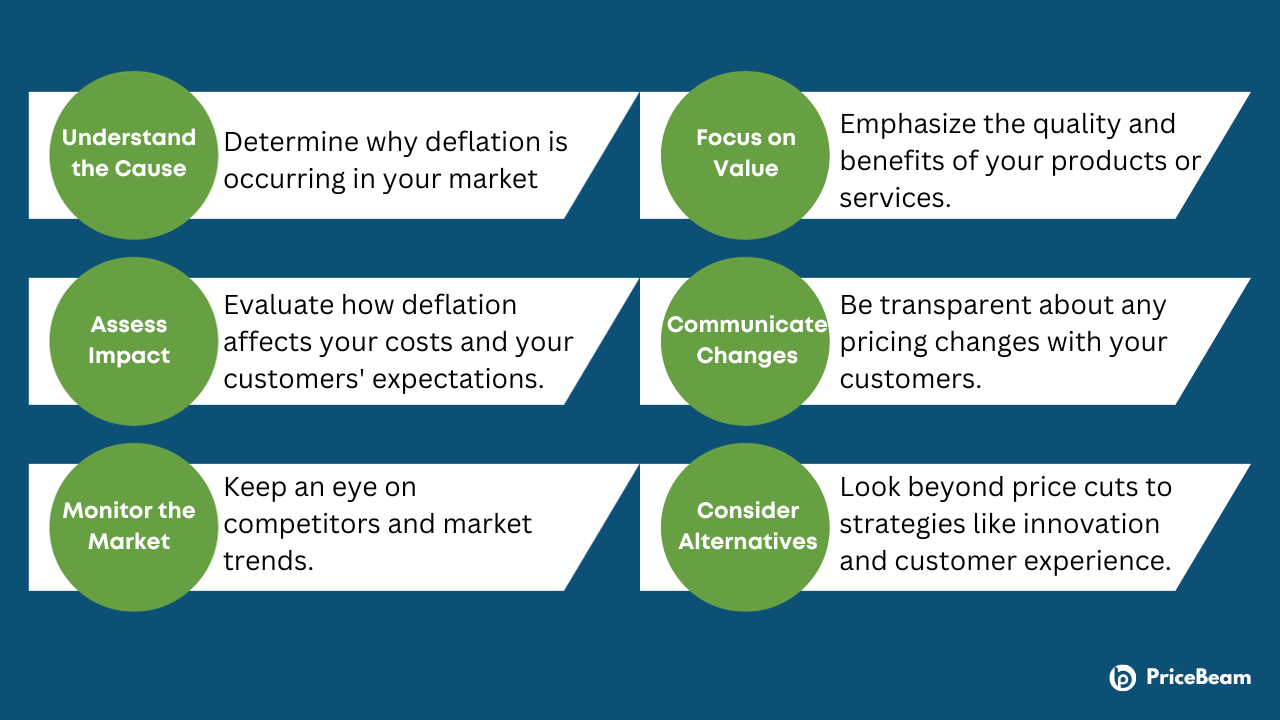Deflation and Pricing: Navigating the Shift in 2024
 PriceBeam
·
2 minute read
PriceBeam
·
2 minute read
.png?width=425&height=239&name=Images%20for%20ADDS%20(1).png)
As 2024 unfolds, we're witnessing a rare economic phenomenon: deflation. This means that, unlike inflation where prices go up, prices of goods and services are decreasing, this shift presents unique challenges and opportunities for businesses in terms of pricing strategies.
Our insights into the deflationary trends of 2024 are drawn from economic forecasts. Notably, Reuters has reported on the deflationary pressures in China, observing a significant decline in both consumer and producer prices. This trend in such a major economy is indicative of wider global economic shifts that could potentially impact other regions, including Europe and the USA. Additionally, Cathie Wood of ARK Invest has predicted deflation as a key theme for 2024. Her forecast includes the likelihood of aggressive rate cuts by the Federal Reserve, which underscores a possible deflationary trend in the USA that could extend to European markets.
But why Is Deflation Happening? Several factors contribute to deflation. It could be due to reduced demand for goods and services, improvements in production efficiency, or even governmental policies. Understanding the root cause in your specific market is key to formulating an effective response.
What is the impact on businesses?
Deflation can lead to consumers delaying purchases in anticipation of even lower prices, potentially hurting sales. On the other hand, lower costs can increase your profit margins. The trick is to find the right balance and adjust your pricing strategy. It's crucial to rethink how prices are set for products or services. Adjusting your pricing strategy appropriately is key to staying competitive and profitable during these times.
Here's a look at some strategic approaches you can consider:
-
Assess Your Costs: Start by understanding how deflation is affecting your costs. If the cost to make or provide your service is going down, you might have some wiggle room to adjust your prices without hurting your profits.
-
Understand Your Market: Know how your customers feel about price changes. In a deflationary period, they might be expecting price drops. If you don't adjust, your products might seem too expensive.
-
Monitor Competitors: Watch what your competitors are doing with their prices. You don't want to miss out if they start offering better deals. However, you also need to be careful not to enter into price wars. It's important to strike a balance between monitoring competitors' movements in pricing etc.. but also pricing in accordance to your target market's willingness-to-pay.
-
Value-Based Pricing: Think about focusing on your product or service's value, rather than just cutting prices. Show customers why your product is worth what they're paying.
-
Flexible Pricing Models: Try out different pricing strategies like offering discounts for buying more or rewards for loyal customers. These can sometimes work better than just lowering all your prices.
-
Communication is Key: If you decide to change your prices, make sure you tell your customers why. Being open about your reasons helps build trust.
These steps can guide you in adjusting your pricing strategy in a way that responds to deflationary pressures while keeping your business healthy and your customers happy
Key Takeaways

Conclusion
Deflation presents a complex challenge for pricing strategies. It's not just about whether to lower prices, but how to adapt your overall business approach to a changing economic landscape. The key is to stay informed, be flexible, and focus on delivering value to your customers. Remember, every business is unique, so there’s no one-size-fits-all solution. Continuous monitoring and adjustment are crucial.
Deflation can be a challenging time, but with a well-thought-out strategy, it also offers opportunities for growth and strengthening customer relationships. By focusing on value, staying adaptable, and understanding your market, you can navigate through these deflationary times successfully.
How PriceBeam Can Assist
In these challenging times, PriceBeam's expertise can be invaluable. Our tools and analyses are tailored to help you understand and adapt to the unique aspects of markets worldwide. By leveraging our insights, you can make informed pricing decisions that align with current economic trends. Interested in exploring how we can specifically help your business in these deflationary times?
Book a free demo with us today and discover how PriceBeam can help you with your pricing strategy.
Sources:
.png?width=400&height=100&name=PBLogoTransparent%20(1).png)




